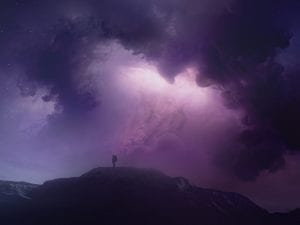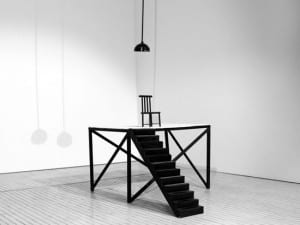Text by Morgan Meaker
For the current exhibition at Raven Row, Mathias Poledna (b. Austria, 1965) and Florian Pumhösl (b. Austria, 1971) have each created a single expansive new work. Poledna has produced a 35mm film for the ground floor, and Pumhösl has made a series of glass paintings for its upper galleries. Bearing the description of contemporary art, visitors may be expecting work of impressive stature, reminiscent of Rothko perhaps, yet upon entering the 18th century rooms, visitors are greeted with the intersecting lines of Pumhösl’s work, titled Fliengende Handler (travelling Hawker). While Pumhösl’s pieces are not immediately breathtaking, being small in size and minimal in detail, the glass paintings are however beautiful in their subtle refinement.
The paintings are dependent on lines and therefore reminiscent of early Mondrian and the De Stile group. Pumhösl moulds a simple recipe of glass and minimal amounts of lacquer paint into a fascinating collection. The apparently perfect lines are, on closer inspection, rife with inconsistencies, giving them a human edge. As well as mimicking human imperfection the panels seem to draw on the influence of nature and the world beyond the windows. As the sun shines in the room and its ray’s falls upon the panels, through shadow a three dimensional effect is created, one that is unique to each picture and each day.
The shadows give an impression of an undercurrent of hidden meaning. Pumhösl attributes this ‘meaning’ to an indirect representation of a person with a market barrow, in his words a symbol of ‘primeval capitalisation of the individual, as a basic and unchanged mechanism’. The fact that the simple aesthetic delights of the glass panels are reinforced by such an idea, relevant and poignant in a society such as ours, makes the work more purposeful. It therefore leaves the realm of being an ambiguous vision, subject to the onlookers interpretation as once you have read Pumhösl’s own words your perspective of the lines shifts as your spectating eye is carefully guided.
The meaning of A Village By The Sea is less artistically manufactured and therefore left more to the imagination of the eyes which look upon it. Poledna’s film, created to accompany Pumhösl’s work, takes the form of an excerpt from a black and white musical. Despite its creation in 2011 it adopts a classic feel with a precise attention to detail, everything in shot belonging to the Golden Era. The characters move around carefully restrained by their choreography and despite the attempt to convey an era far detached from our own, there is something distinctly modern about the faces of both man and woman.
This was a film unexpected as a work of art, and therefore this is what it has in common with Pumhösl’s panels. Both then question essentially what the recipe is for a successful piece of contemporary art. Where Poledna confuses the boundaries between the art forms; art, film and music, Pumhösl swaps canvas for glass and shape for lines. The viewer is then forced to consider the process of art and its definition as a whole.
This is not an exhibition for the less than patient art enthusiast, however for those who are willing to pause and consider what they see in front of them they will find the collaboration ultimately rewarding. The exhibition is then thought provoking and subtly beautiful, this is particularly true of Pumhösl’s panels, however Poledna’s film is not without its charm. Raven Row is used as a foundation to the work, enhancing the spectator’s experience, almost creating a third work of art through architectural design. Although perhaps not suitable for visitors with a short attention span, these are artists that reward you for the time and consideration you offer them, offering delicately beautiful and intelligent work in return.
Mathias Poledna / Florian Pumhösl continues until 20 November 2011.
Thursday 27 October 2011, 7pm
Mathias Poledna and Florian Pumhösl In Conversation with Michael Bracewell
In conjunction with the show writer Michael Bracewell will discuss the exhibition and their work with the artists. Michael Bracewell is the author of six novels and three works of non-fiction, most recently Re-make/Re-model: Art, Pop, Fashion and the making of Roxy Music, 1953 – 1972. Since the late 1990s he has written widely on modern and contemporary British art. His collected writings on art, The Space Between will be published by Ridinghouse later this year.
Places are free but must be booked in advance and will be offered on a first come first served basis. Please email info@ravenrow.org to reserve a place. All names must be given for a place, and there is a maximum of two places per email.
Image:
Mathias Poledna
A Village by the Sea, 2011
35mm black and white film, optical sound
5:40min
Photo by Marcus J. Leith, courtesy Raven Row





